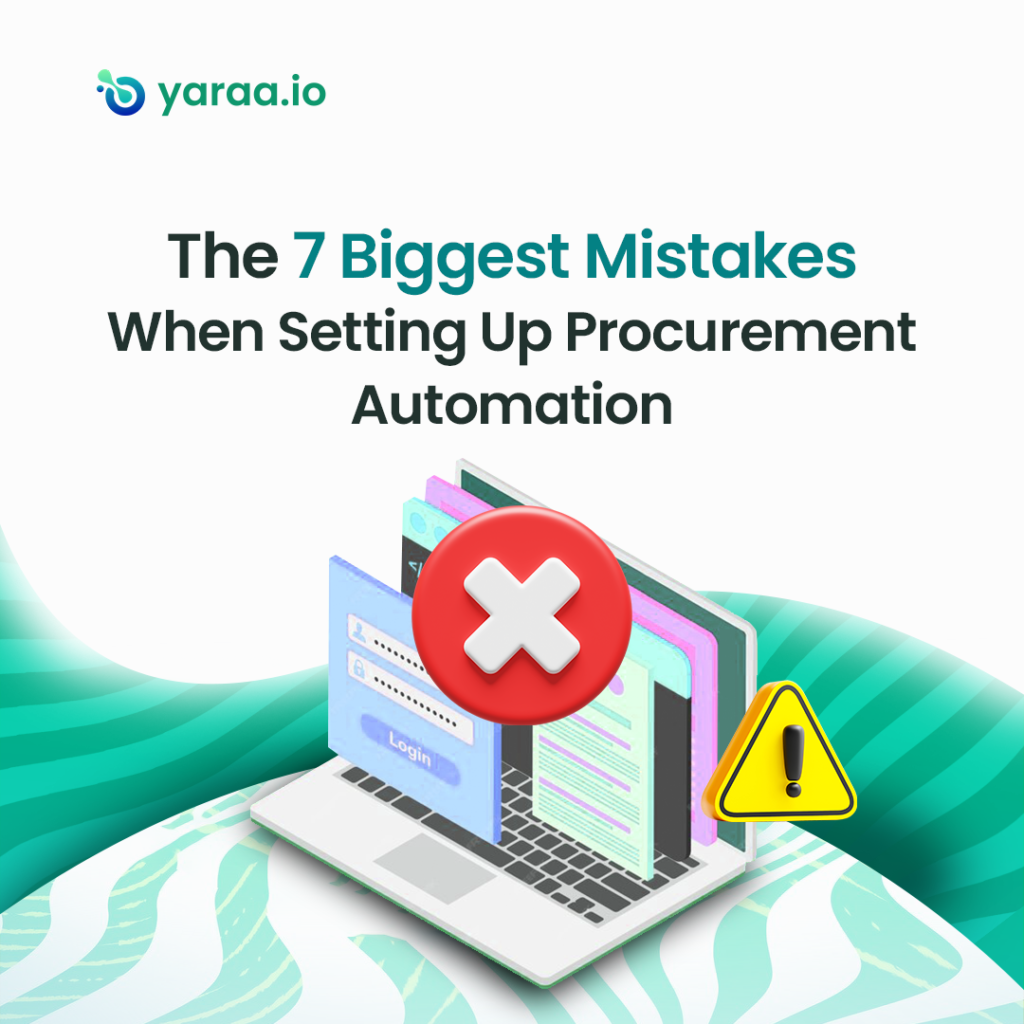Procurement automation has the potential to revolutionize the way organizations manage their supply chains and expenses. However, despite its benefits, many businesses make critical mistakes during implementation. In this article, we’ll explore the seven biggest blunders organizations often commit when setting up procurement automation and provide insights on how to avoid them.
What is Procurement Automation?
Before delving into the common mistakes, it’s essential to understand what procurement automation entails. Procurement automation is the use of technology and software to streamline and optimize the procurement process. It encompasses various aspects, including purchase requisition, vendor management, purchase orders, invoice processing, and spend analysis. The primary goal is to enhance efficiency, reduce manual intervention, and ensure accuracy throughout the procurement lifecycle.
Benefits of Automating Your Procurement
Before discussing the common mistakes in procurement automation, it’s crucial to highlight the substantial benefits this transformative technology brings:
- Cost Savings: Automation reduces manual errors, minimizes processing time, and enhances cost control. It helps organizations negotiate better deals with suppliers, ultimately leading to significant cost savings.
- Efficiency: Automation accelerates the procurement cycle, from requisition to payment, making it more efficient. This results in quicker delivery of goods and services, improving overall operational efficiency.
- Data-Driven Decision-Making: With automation, organizations have access to real-time data and analytics, enabling data-driven procurement decisions. This, in turn, enhances strategic sourcing and vendor management.
- Improved Accuracy: Automation eliminates data entry errors and discrepancies, ensuring precise record-keeping and reporting. This accuracy is crucial for compliance and audit requirements.
- Enhanced Supplier Relationships: Automation streamlines communication with suppliers, facilitating better relationships. Timely payments and smoother transactions create a positive supplier experience.
- Compliance and Security: Procurement automation systems incorporate compliance checks and robust security measures, ensuring adherence to regulations and safeguarding sensitive data.

The Common Mistakes Organizations Make When Implementing Procurement Automation:
1: Neglecting Clear Objectives and Strategy
Procurement automation should align with your organization’s specific goals and requirements. The first mistake is deploying automation without a well-defined strategy. Before implementation, identify your objectives, key performance indicators (KPIs), and a roadmap for achieving them. This ensures that your automation efforts are purposeful and impactful.
2: Inadequate Vendor Assessment
Selecting the right procurement automation solution is crucial. The second mistake is not conducting a thorough vendor assessment. It’s essential to evaluate vendors based on factors like their reputation, support, and scalability. Choose a solution provider that can grow with your organization and offer reliable assistance when needed.
3: Poor Data Management
Effective procurement relies on data, and mishandling it is the third common mistake. Inaccurate, outdated, or poorly organized data can disrupt automation processes. It’s vital to establish data governance practices, maintain data quality, and ensure compatibility with your automation system for smooth operations.
4: Ignoring Change Management
Resistance to change is another significant mistake. Employees may be hesitant to embrace automation, fearing job displacement or workflow disruptions. Successful automation involves a change management strategy that educates, communicates, and involves employees in the transition, making them comfortable with the new tools.
5: Overlooking Compliance and Security
The fifth mistake is neglecting procurement compliance and security. Automation should not compromise data security, and it must adhere to regulatory requirements. Implement robust security measures, access controls, and compliance checks to safeguard sensitive procurement data.
6: Failure to Monitor and Optimize
Many organizations make the sixth mistake of considering automation a one-time effort. Continuous monitoring and optimization are essential to realize long-term benefits. Regularly review your procurement processes, and automation performance, and adapt to evolving business needs.
7: Lack of Integration
The final and perhaps most significant mistake is failing to integrate procurement automation with existing systems. Siloed automation creates inefficiencies and data fragmentation. Integration with ERP, financial, and other business systems is critical to harness the full potential of automation.
Also read: HOW YARAA’S PROCUREMENT SOFTWARE CAN TRANSFORM YOUR BUSINESS
Conclusion:
Procurement automation holds enormous potential for organizations seeking to enhance efficiency, reduce costs, and streamline operations. However, avoiding common mistakes is essential for a successful implementation.
By setting clear objectives, conducting thorough vendor assessments, managing data effectively, embracing change management, prioritizing compliance and security, monitoring and optimizing continuously, and ensuring seamless integration, businesses can unlock the full potential of procurement automation.
Learn from these blunders, and your organization can embark on a successful automation journey that yields lasting benefits.
Looking for automations to improve your procurement process? Book a demo with us today!